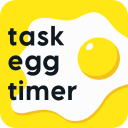Task Egg Timer
What is Task Egg Timer?
The "Task Egg Timer" app for Jira Cloud is designed to enhance project management and reporting within the Jira ecosystem. The app provides insights into various aspects of issue lifecycle management, helping teams optimize workflows, improve productivity, and make data-driven decisions. Here's a comprehensive list of benefits and features you might expect from such an app:
Benefits
Improved Project Visibility: Gain clear insights into how much time issues spend in each status, helping to identify bottlenecks or inefficiencies in the workflow.
Enhanced Productivity: By identifying and addressing workflow bottlenecks, teams can streamline processes, reducing cycle times and improving overall productivity.
Data-Driven Decision Making: Detailed analytics on time spent in each status enable managers to make informed decisions to optimize team performance and project timelines.
Increased Accountability: Teams can track time spent on specific tasks more accurately, promoting accountability among team members.
Better Resource Allocation: Understanding time expenditure across different statuses allows for more efficient resource allocation and workload balancing.
Historical Data Analysis: Analyze historical data to identify trends, forecast future project timelines, and make informed planning decisions.
Enhanced Collaboration: Teams can easily share insights and reports, fostering a collaborative environment focused on continuous improvement.
Features
Measure Time in Status: Track the time each issue spends in every status, including "In Progress," "To Do," and "Done".
Track Project-Specific Issue Types: Select the specific Jira issue types that will require time-tracking within the project.
Define a Timer Type: Choose between two different timer types, based on the overall goal or objective of the project:
Stopwatch: Ideal for Tracking the overall time in status of each issue.
Countdown: Perfect for measuring project deadlines
Responsive Time Measuring: Define trigger points for workflows by selecting when Task Egg Timer should start measuring the issue’s time in status.
Time in Status: Measures how long an issue stays in a particular status or stage within its workflow.
Cycle Time: The amount of time an issue spends in the active working process.
Lead Time: The total time from when a task is created to when it is fully completed.
Give the Team a Break: Select a status within the workflow on which the issue time tracking can be paused.
SLA Management: Set and monitor Service Level Agreements (SLAs) based on the time issues spent in specific statuses, ensuring timely delivery.
Use Cases
Identifying and Addressing Workflow Bottlenecks
Scenario: A software development team notices that their release cycle is taking longer than expected, but they're not sure where the delays are occurring.
Use Case: By using a "Time in Status" app, the team can analyze how long issues are spent in each status, such as "In Development", "QA Testing", or "Review". Identifying stages with unusually long durations helps pinpoint where bottlenecks are occurring, allowing the team to implement specific improvements, like reallocating resources or modifying the workflow.
Improving SLA Compliance
Scenario: An IT service company has committed to resolving customer-reported bugs within 72 hours to meet Service Level Agreements (SLAs).
Use Case: The "Time in Status" app can track the time each bug report spends in the "Reported", "In Progress", and "Resolved" statuses. This enables the team to monitor SLA compliance in real-time, identify any SLA breaches, and take immediate action to address delays, ensuring customer satisfaction and trust.
Optimizing Team Performance and Resource Allocation
Scenario: A project manager observes fluctuating productivity levels among team members and seeks to optimize task distribution and team performance.
Use Case: By analyzing the time tasks are assigned to different team members, the manager can identify patterns of efficiency or delay. This data-driven approach allows for informed decisions on workload distribution, training needs, or reallocating resources to balance the team's workload and enhance overall productivity.
Enhancing Project Planning and Forecasting
Scenario: A product manager is planning the roadmap for a new feature development but needs to estimate timelines based on historical data.
Use Case: Utilizing historical data from the "Time in Status" app, the manager can analyze the duration of similar past projects or tasks, understanding how long they typically spend in various stages of development. This insight facilitates more accurate project planning, timeline estimation, and risk assessment for future initiatives.
Facilitating Continuous Improvement
Scenario: An Agile team aims to continuously improve its processes by identifying inefficiencies and implementing iterative changes.
Use Case: The team uses the "Time in Status" app to regularly review how long issues are spent in each status across sprints. By identifying trends and outliers, they can discuss these insights during retrospectives to devise actionable strategies for process improvements, such as adjusting workflows, implementing automation, or enhancing collaboration techniques.
Visit our App on the Marketplace
Task Egg Timer
